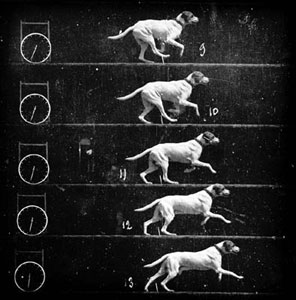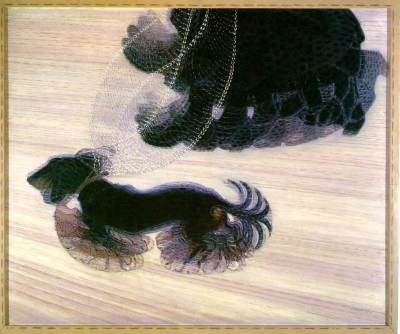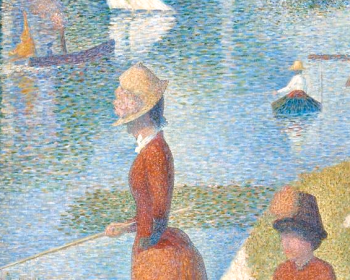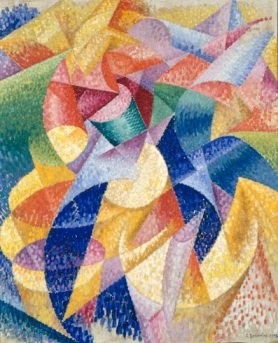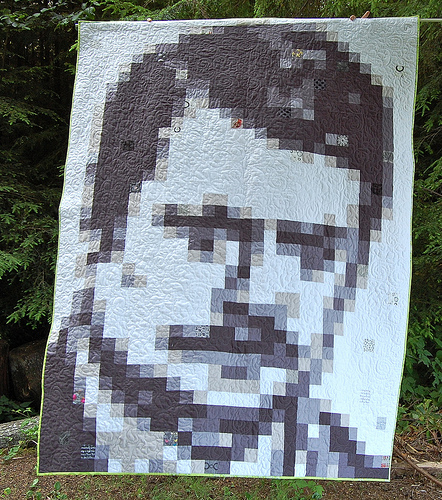In today’s Lessons in Modern Art for the Modern Quilter, we’ll examine the Italian tech-savvy artists of their time — the Futurists!
From about 1910 – 1920 an unofficial group of Italian artists became fascinated with modern technologies, and the new urban environment. They wanted to make art that truly embraced the hustle-and-bustle of a metropolis. How can flat paintings convey the tremendous motion of a busy city?
The new technology of chrono-photography showed these artists one way to show movement within a static frame. Chronophotography was the use of a special camera (one with many lenses – as many as 12) that would take several pictures in rapid succession. These frames could then be displayed together or even overlapped to convey movement.
Compare the chronophotigraphic work above to this Futurist painting by Giacomo Balla. True story, this is one of my favorite paintings : )
There were also major developments in the Optical Sciences during this time. Artists interpreted the theories presented in recent scientific developments to mean that colors would get a stronger luminescence if pure, unmixed dots or strokes of pigments were set next to each other. Then the viewer would mix the dot colors together with their eyes, creating a more vivid look to the work. This method of painting is called Divisionism and is a by-product of the Impressionist movement of Pointillism. Pointillism was more focused on the paint-stroke style of juxtaposing pigment dots, and was not as concerned about the optical science basis of the separation of colors.
The most famous example of pointillism is this “A Sunday on La Grande Jatte” by Georges Seurat in 1884. Here is an extreme close-up so that you can see the many dots of pigments:
For a look at the Divisionist technique we can look at this:
Not only does this work showcase the brush style of many small quick, unmixed strokes to create a vivid color representation, but it also is conveys movement and an even 3-D quality.
Combining the theories of technology and Pointillism / Divisonism, I believe the pixelated quilt trend, now offered as a class by Caro Sheridan, gels with a discussion of Futurism. My favorite pixelated quilt? Hello! The Ron Swanson quilt by Monica Solorio-Snow who blogs at thehappyzombie.com :
Digital photography has become the norm and with that comes the use of computer photo-editing software. Concerns regarding DPI (dots per inch) or PPI (pixels per inch) have crossed over from the technological world into our sewing designs! Modern Quilters certainly are linked to modern technologies – uploading images to their blogs, joining link-up parties, using every latest mode of social media; we can use the term MODERN to mean of-the-moment and up-to-speed, but it’s also fun to look at the Modern Art style of Futurism and see the comparisons with our modern quilting movement.
Key Sources: theartstory.org and guggenheim.org


